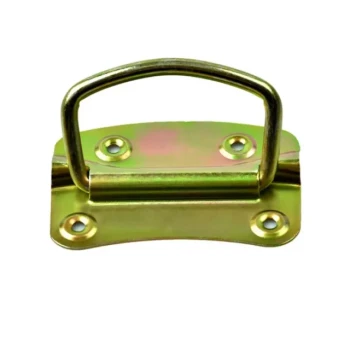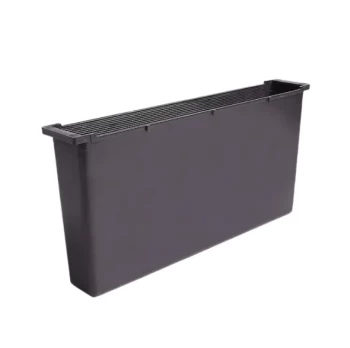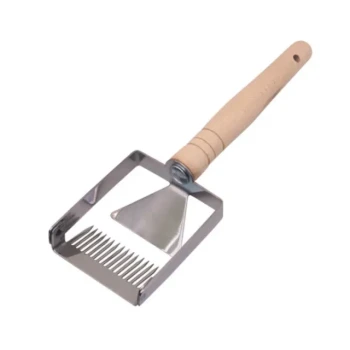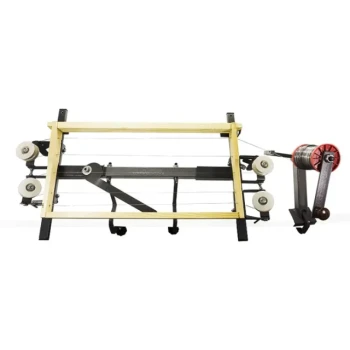Proper ventilation is non-negotiable when moving a beehive because it is the single most important factor in preventing rapid, catastrophic colony death. When sealed for transport, a hive's internal temperature can skyrocket due to the bees' collective body heat and agitation, effectively cooking the colony from the inside out in a surprisingly short amount of time. Without adequate airflow, you risk losing the entire hive, including the queen, brood, and all adult bees.
A beehive is a living superorganism that generates immense heat when stressed. Moving a hive without ventilation is like trapping thousands of panicked animals in an unventilated, insulated box—the internal temperature quickly becomes lethal.
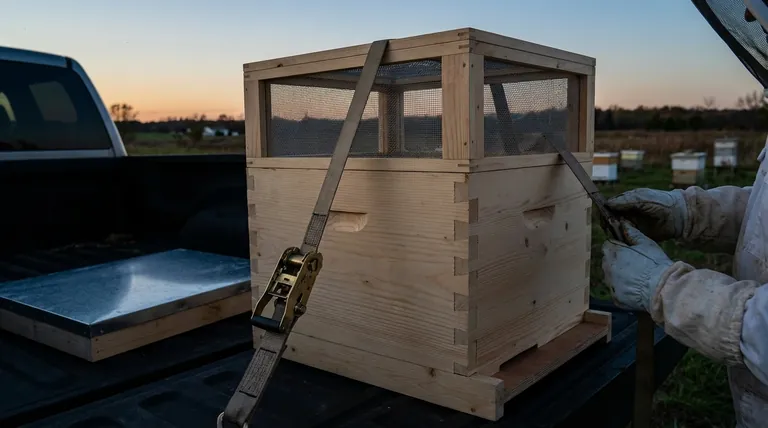
The Core Danger: Acute Overheating
When a hive is prepared for a move, the bees are confined and agitated. This combination creates a perfect storm for a thermal crisis that can unfold much faster than many beekeepers realize.
Why a Move Triggers Heat Buildup
The process begins the moment you seal the hive entrance. The bees, sensing the disturbance and confinement, increase their activity and metabolism. This activity, combined with the body heat of tens of thousands of individuals packed together, generates a tremendous amount of thermal energy.
Without an escape route, this heat gets trapped. The bees' own respiration also releases carbon dioxide and water vapor, further increasing the internal humidity and temperature in a dangerous feedback loop.
The Consequences of a Thermal Crisis
The results of overheating are swift and devastating. The wax comb, which has a relatively low melting point (around 145°F or 63°C), can soften and collapse. This destroys brood, honey, and pollen stores, often drowning the queen and other bees in flowing honey.
Even before the comb melts, the high temperatures will kill the sensitive larvae and pupae (the brood). Adult bees will soon follow, leading to the death of the entire colony. Entire truckloads of commercial hives have been lost this way.
How Weather Amplifies the Risk
Hot weather dramatically accelerates this process. A hive moved on a warm or hot day is at extreme risk. The external ambient temperature reduces the hive's ability to passively shed any heat, meaning the internal temperature will climb even faster.
Conversely, moving on a cool night provides a much larger margin for error, as the cool air helps to pull heat away from the hive.
Best Practices for Move-Day Ventilation
Your goal is to maximize airflow while ensuring the bees remain securely inside the hive. This is a straightforward process with the right equipment.
The Screened Top: Your Most Critical Tool
The industry standard for safe transport is to replace the hive's solid inner cover and telescoping outer cover with a screened inner cover or a dedicated moving screen. This creates a massive opening for heat and moisture to escape from the top of the hive, which is where it naturally rises.
This single piece of equipment is the most effective way to prevent overheating during a move.
Securing the Hive Body
Before lifting, ensure all hive components (bottom board, brood boxes, supers, and top screen) are strapped together tightly. Ratchet straps are ideal for this. This prevents parts from shifting during transport, which could create an escape route for thousands of stressed bees.
Managing the Hive Entrance
While a screened top provides the primary ventilation, the entrance must also be considered. It should be sealed to prevent bees from escaping. A standard entrance reducer can be used, but it's often better to block it entirely with a piece of foam or a dedicated entrance screen that still allows for some minor airflow.
Understanding the Trade-offs
Successfully moving a hive is about balancing security with airflow. Ignoring either one can lead to disaster.
Security vs. Airflow
The primary trade-off is containment versus ventilation. Sealing a hive with tape and foam alone is a recipe for disaster because it provides zero airflow. Conversely, insufficient strapping with a screened top could lead to a hive body shifting and releasing a defensive cloud of bees. Always prioritize a screened top secured with strong straps.
The Myth of "Too Much Air"
During a hot weather move, it is nearly impossible to provide too much ventilation. The risk of overheating far outweighs any hypothetical risk from excessive airflow. The more air you can move through the top of the hive, the better.
When Less Ventilation is Acceptable
For a very short move (e.g., across the yard or a few minutes down the road) on a cool day or night, you may get away with less ventilation. However, using a screened top is always the safest professional practice, regardless of the distance or temperature.
Making the Right Choice for Your Move
Your strategy should be dictated by the conditions of the move.
- If you are moving on a warm or hot day, or for a long distance: A screened inner cover is absolutely mandatory. Do not attempt the move without one.
- If you are moving a very short distance on a cool evening: You have more flexibility, but using a screened top is still the safest and recommended method.
- If you want to follow professional best practices: Always use a screened inner cover and securely strap the hive components together, regardless of the move's duration or the weather.
Ultimately, preparing a hive for transport is a critical moment where your actions directly determine the colony's survival.
Summary Table:
| Risk Factor | Consequence | Prevention Method |
|---|---|---|
| Sealed Hive | Rapid temperature rise, lethal overheating | Use a screened inner cover for top ventilation |
| Bee Agitation | Increased metabolic heat generation | Secure hive tightly with straps to minimize stress |
| Hot Weather | Accelerated heat buildup, reduced margin for error | Maximize airflow; avoid moving during peak heat |
| Long Distance | Prolonged exposure to confined conditions | Screened top is mandatory for all long-distance moves |
Protect your investment and ensure your colonies arrive safely. HONESTBEE supplies commercial apiaries and beekeeping equipment distributors with the professional-grade, wholesale-focused equipment needed for secure hive transport, including durable screened inner covers and heavy-duty ratchet straps. Don't risk a thermal crisis—contact our experts today to equip your operation with the right tools for success.
Visual Guide
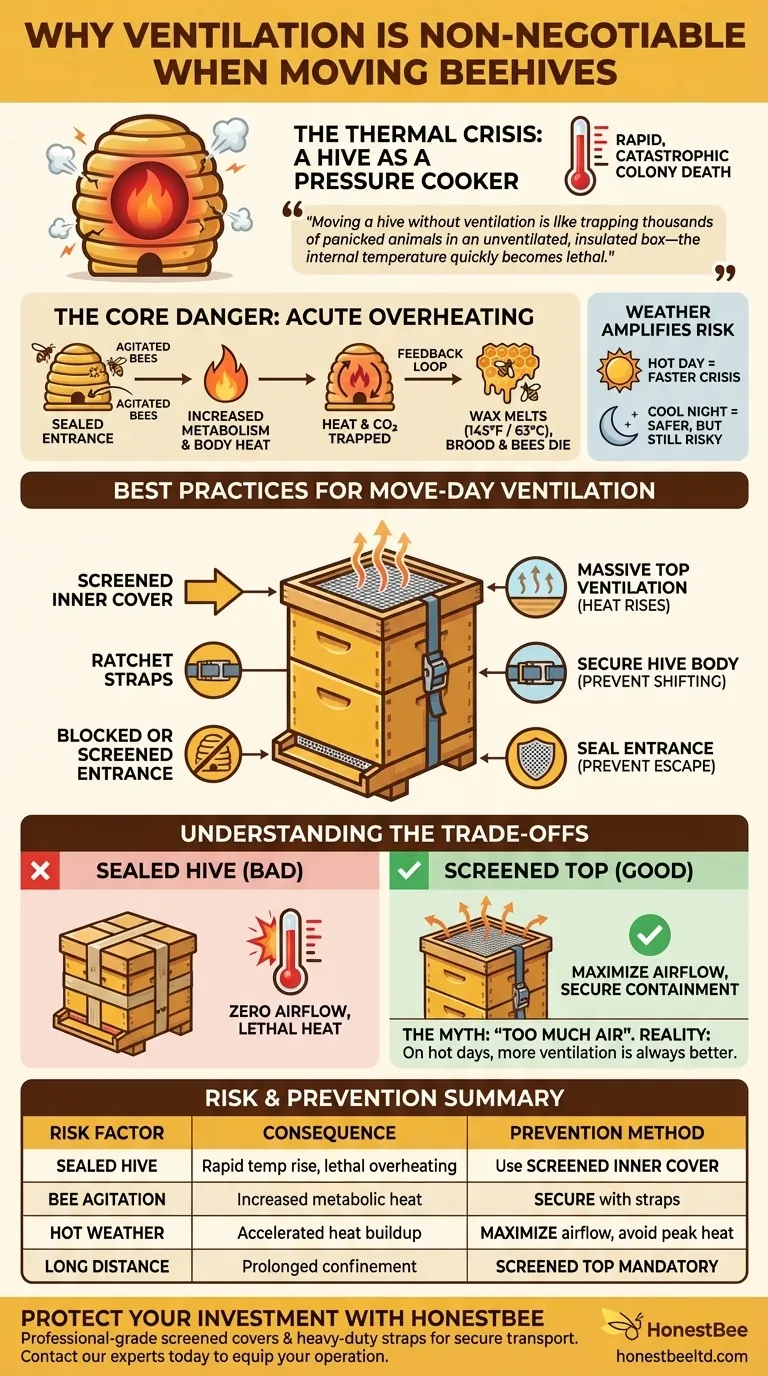
Related Products
- Wholesales Dadant Size Wooden Bee Hives for Beekeeping
- Professional Grade Foldable Beehive Handles
- Inner Beehive Cover for Beekeeping Bee Hive Inner Cover
- Yellow Plastic Bucket Pail Perch for Beekeeping
- Automatic Honey Flow Beehive 4 Frame Mini Hive for Beekeeping
People Also Ask
- What types of products are available for beekeeping needs? Essential Equipment for Apiaries & Distributors
- What are the advantages of wooden bee hives? Superior Bee Health & Beekeeper Flexibility
- What are the essential pieces of equipment for most beekeepers? Get Started with the Right Gear
- What are the characteristics of oil-based paint for beehives? Durability vs. Modern Practicality
- What should you do if you find an ant nest near your beehive? Essential Strategies for Hive Protection

